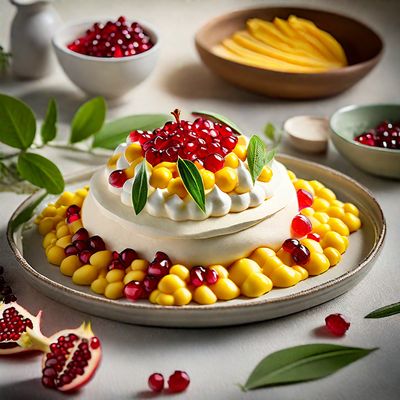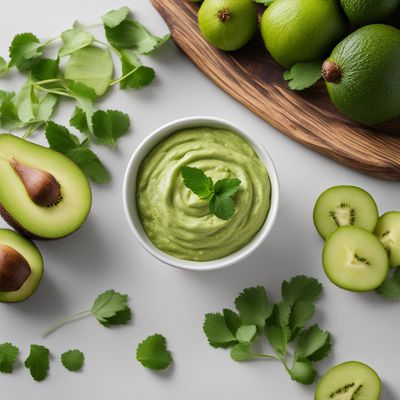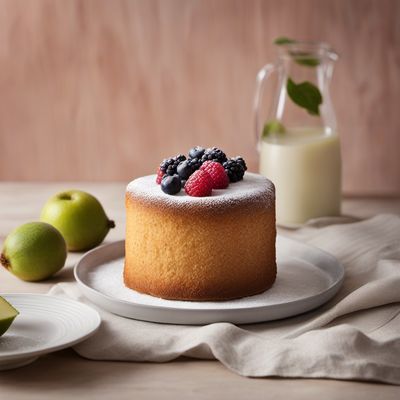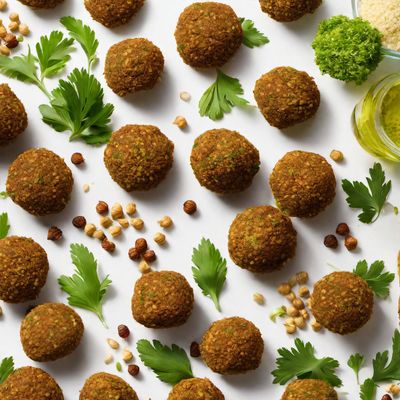
Recipe
Japanese-Inspired Matcha Pavlova
Sakura Delight: Matcha Pavlova with Cherry Blossom Flavors
4.9 out of 5
In the realm of Japanese cuisine, where delicate flavors and exquisite presentation reign supreme, we have reimagined the classic Australian/New Zealand dessert, Pavlova. This Japanese-inspired Matcha Pavlova combines the elegance of matcha green tea with the subtle essence of cherry blossoms, resulting in a harmonious fusion of cultures.
Metadata
Preparation time
20 minutes
Cooking time
1 hour and 30 minutes
Total time
1 hour and 50 minutes
Yields
6 servings
Preparation difficulty
Medium
Suitable for
Vegetarian, Gluten-free, Nut-free, Soy-free, Low sodium
Allergens
Eggs, Dairy
Not suitable for
Vegan, Dairy-free, Egg-free, Paleo, Keto
Ingredients
While the original Pavlova is known for its crisp meringue shell and luscious fruit toppings, this Japanese adaptation infuses the meringue with matcha powder, giving it a vibrant green hue and a distinct earthy flavor. Additionally, we incorporate cherry blossom essence into the whipped cream, adding a touch of floral sweetness to the dessert. We alse have the original recipe for Pavlova, so you can check it out.
-
4 large egg whites (120g) 4 large egg whites (120g)
-
1 cup (200g) granulated sugar 1 cup (200g) granulated sugar
-
1 tablespoon matcha powder 1 tablespoon matcha powder
-
1 teaspoon cornstarch 1 teaspoon cornstarch
-
1 teaspoon white vinegar 1 teaspoon white vinegar
-
1 cup (240ml) heavy cream 1 cup (240ml) heavy cream
-
2 tablespoons powdered sugar 2 tablespoons powdered sugar
-
1 teaspoon cherry blossom essence 1 teaspoon cherry blossom essence
-
Fresh berries and edible flowers, for garnish Fresh berries and edible flowers, for garnish
Nutrition
- Calories (kcal / KJ): 280 kcal / 1172 KJ
- Fat (total, saturated): 17g, 10g
- Carbohydrates (total, sugars): 30g, 28g
- Protein: 3g
- Fiber: 1g
- Salt: 0.1g
Preparation
-
1.Preheat the oven to 120°C (250°F) and line a baking sheet with parchment paper.
-
2.In a clean, dry mixing bowl, whisk the egg whites until soft peaks form.
-
3.Gradually add the granulated sugar, one tablespoon at a time, while continuing to whisk until the mixture becomes glossy and stiff peaks form.
-
4.Sift the matcha powder and cornstarch over the meringue and gently fold until well combined.
-
5.Add the white vinegar and fold again to incorporate.
-
6.Spoon the meringue onto the prepared baking sheet, shaping it into a round disc with slightly raised edges.
-
7.Bake for 1 hour and 30 minutes, then turn off the oven and leave the pavlova inside to cool completely.
-
8.In a separate bowl, whip the heavy cream, powdered sugar, and cherry blossom essence until soft peaks form.
-
9.Carefully transfer the cooled pavlova onto a serving plate and fill the center with the whipped cream.
-
10.Garnish with fresh berries and edible flowers.
-
11.Serve immediately and enjoy the delicate flavors of this Japanese-inspired Matcha Pavlova.
Treat your ingredients with care...
- Matcha powder — Ensure you use high-quality matcha powder for the best flavor and vibrant green color.
- Cherry blossom essence — Use a few drops at a time to adjust the intensity of the floral flavor according to your preference.
- Fresh berries — Choose ripe and seasonal berries for the best taste and visual appeal.
- Edible flowers — Select edible flowers that are safe for consumption and add a touch of elegance to the presentation.
- Granulated sugar — Make sure the sugar is fully dissolved in the meringue mixture to achieve a smooth texture.
Tips & Tricks
- To achieve a crisp exterior and a soft, marshmallow-like interior, ensure the pavlova is baked at a low temperature for a longer duration.
- Allow the pavlova to cool completely in the oven to prevent cracking.
- Dust the pavlova with matcha powder or powdered sugar just before serving for an extra touch of elegance.
- Experiment with different types of edible flowers to create a visually stunning presentation.
- Serve the pavlova immediately after assembling to maintain its texture and prevent it from becoming soggy.
Serving advice
Serve the Japanese-Inspired Matcha Pavlova as a stunning centerpiece dessert at a special occasion or a Japanese-themed gathering. Cut into individual portions and plate with care to preserve the delicate meringue. Pair with a cup of green tea or sakura-infused tea for a truly authentic experience.
Presentation advice
To enhance the visual appeal, garnish the pavlova with a sprinkle of matcha powder and a few additional edible flowers. Consider serving it on a Japanese-inspired ceramic plate or a wooden platter to complement the fusion of cultures.
More recipes...
For Pavlova » Browse all
For New Zealand cuisine » Browse all
More New Zealand cuisine dishes » Browse all
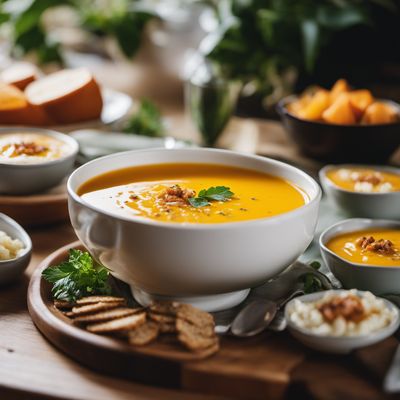
New Zealand Pumpkin Soup
New Zealand Pumpkin Soup is a creamy and flavorful soup that is made with roasted pumpkin, onions, and garlic. It is a popular dish in New Zealand...

Anzac Biscuits
Anzac biscuits are a type of cookie that originated in Australia and New Zealand. They are named after the Australian and New Zealand Army Corps...

Whitebait Fritters
Whitebait fritters are a popular New Zealand dish that is made with small fish that are battered and deep-fried. They are a crispy and flavorful...
More Japanese cuisine dishes » Browse all

Dango
Dango is a traditional Japanese sweet made from rice flour. It is a popular snack and dessert in Japan, often served on skewers and topped with...
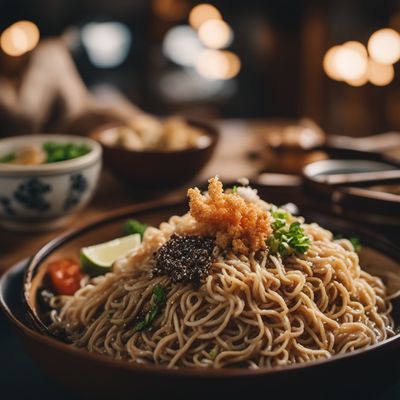
Tanuki soba
Buckwheat Noodles with Tempura
Tanuki soba is a Japanese noodle dish made with buckwheat noodles and a savory broth.

Tebasaki yakitori
Chicken Wing Yakitori
Tebasaki yakitori is a Japanese dish made with chicken wings skewered and grilled over charcoal. It is a popular street food in Japan and is often...

